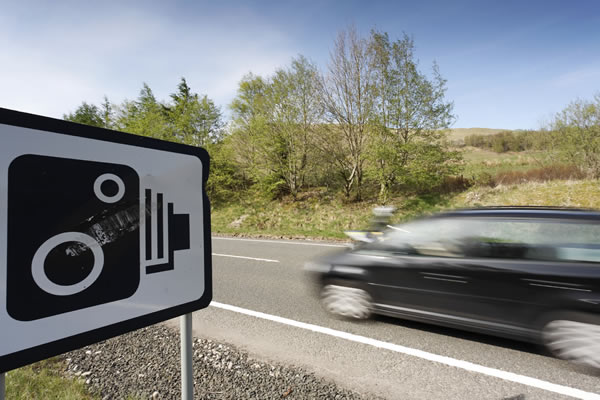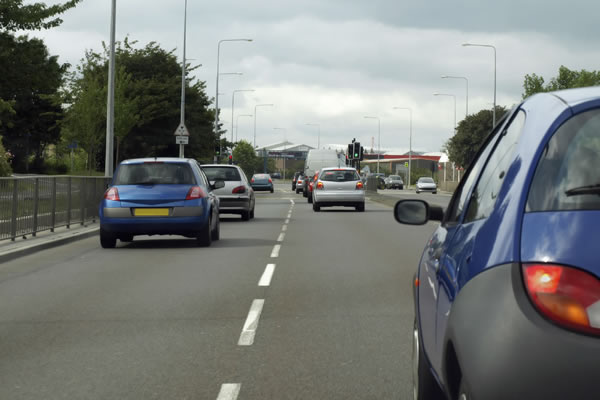Traffic Signal Design Terminology
Traffic Signal Design Terminology for words and phrases included within our Traffic Signal Design Website.
Right of Way
At traffic signals this refers to the right of priority to a traffic movement moving in a particular direction.
Phase
An indication shown to a particular traffic or pedestrian link. Each phase at a junction exists as an electrical circuit from the controller and feeds one or more signal heads. A phase can apply to a single aspect (filter or indicative arrow), a two aspect head (pedestrians) or a three aspect head (red/amber/green where the green could be a directional arrow).
Stage
A series of non-conflicting phases which run together. A stage starts when the last of the phases commences and then ends when the first of the phases terminates.
Stage Diagram
A diagram using arrows which shows the phase movements permitted in each stage.
Cycle
One complete sequence of the operation of traffic signals.
Cycle Time
The time taken to complete one cycle. In the UK the maximum cycle time is usually 120 seconds, but this is often lowered to a maximum 90 seconds where pedestrian facilities are present. Signal controlled roundabouts often have shorter cycle times as they often have limited stacking space on the circulatory carriageway which quickly fills up and blocks the exit from the roundabout.
All Red
A condition of traffic signals where all traffic movements are shown a red signal. This is often to allow a pedestrian stage to run.
All Red Period
Period during the change from one phase green to the next phase green where all phases show red.
Intergreen Period
The time between end of right of way for a phase and the start of the right of way for the next phase. These comprise of the 3s leaving amber for the phase losing right of way and the 2s starting red/amber for the phase gaining right of way. Depending on the geometry of the junction there may also be a period of all red to allow all traffic to clear the junction.
Intergreens must be measured carefully when configuring a junction as one that is too short can mean traffic from the previous stage is still clearing the junction when the next stage starts. Conversely, intergreens which are too long can lead to unnecessary delay within a junction which may have negative implications on the level of queuing and delay experienced at the junction.
Interstage Period
The time between the end of one stage and the start of the next stage.
Maximum Green
The maximum duration of a green signal after a conflicting demand has been registered in the controller. The value is configurable by time of day to suit different conditions throughout the day.
Minimum Green
The minimum duration of a green signal during which time no change of the signal lights can occur. In the UK this is usually 7 seconds for full traffic phases, 4 seconds for an arrow phase and 5 seconds for a pedestrian phase.
Invitation Period
The amount of time a steady green signal is shown to pedestrians at traffic signals (either a junction or a standalone pedestrian crossing).
Lost Time
The time during a cycle which cannot be used as effective green to one or more phases.
Green Split
The division of available green time between stages within a signal cycle.
Offset
The time difference between a specific point in the cycle at a junction and a reference point, for example the start/end of a stage at an adjacent junction.
Conflicting Movements
Movements at a junction which cannot proceed safely at the same time, i.e. a main road and a side road.
Conflicting Phases
Phases which control conflicting movements (see also opposing phases).
Opposing Phases
Phases which are not permitted to run together by the signal controller which do not control conflicting traffic movements.
Opposing Traffic
Traffic proceeding in the opposite direction.
Opposed Right Turn
A right turning movement that is in conflict with oncoming traffic.
Coordination
An arrangement which relates the timings of a signal installation with the timings at a neighbouring installation (junction/crossing etc)
Arterial Reversion
In the absence of demands the traffic signals will revert to a selected stage (for example the main road or all red stage).
Green Wave
A control strategy for a linear system of traffic signals which synchronises the start of green with the arrival of the platoon from the upstream junction.
Protected Movement
A signalled movement where conflicting movements are held at red. This often applies to right turners.
Parallel Stage Streams
Two or more complete sequences of stages within the same controller which operate at the same time enabling two junctions or parts of a junction to be controlled with or without interaction between them. An example of this is a junction with an associated, but remote, pedestrian crossing.
Demand
A request for right of way for traffic.
Demand dependent
A stage within a signal cycle that is only called when a demand for it is registered, for example a pedestrian stage or a lightly trafficked side road stage.
Call/Cancel
Certain detectors will call a stage or a phase when occupied for a certain period of time. The demand will also be cancelled if the detector then becomes unoccupied for a specified time before the demand has been serviced (for example when a vehicle turns in a gap in opposing traffic).
Reserve Capacity
The difference between the capacity of a junction and the current demand. This is usually expressed as a percentage of the current demand. It is used as a measure of how well the junction operates. The higher the reserve capacity (i.e. the more spare capacity) the shorter the queues and delay.
Saturation Flow
The maximum flow obtained at a stop line during green from a discharging queue. It is usually expressed in vehicles or passenger car units (pcus) per hour.
Oversaturation
Demand exceeding capacity. A measure of how well a junction operates.
PCU
Passenger Car Unit. A uniform measurement of vehicles equal to the equivalent of a typical car. A breakdown for all types of vehicle is given in paragraph 3.2 of the TRL publication RR67.
Platoon
A group of vehicles moving together where the behaviour of each upstream vehicle is influenced by the one in front. Platoons can often be found progressing around signal controlled roundabouts.
Isolated Control
Control of a signal installation where the timings are not related or linked to adjacent installations.
Local Control
A method of control for a signal installation which is not influenced by any adjacent junctions or the area control system.
MOVA
Microprocessor Optimised Vehicle Actuated method of control for a standalone junction or small group of adjacent junctions which aims to minimise stops and delay and maximise capacity.
SCOOT
Split, Cycle, Offset Optimisation Technique which uses real time observed traffic data to minimise stops and delays for UTC controlled areas/networks.
UTC
Urban Traffic Control. A method of control for traffic signals where a number of signals are managed by a central computer system.
Vehicle Actuation (VA)
A method of control where the green times are determined by the real time flow of traffic on the approaches to the signal installation. Detectors are used to monitor the traffic flows.
CLF
Cableless Linking Facility. A method used for coordinating the timings of adjacent signal installations by the use of clocks synchronised to mains electricity supply frequency.
Fixed Time
A method of traffic signal control where all the timings are fixed from one cycle to a next i.e. the cycle time, green time and red time all remain constant.
Gating
A method of using traffic signals to control the flow of traffic to a downstream junction by restricting it at an upstream junction.
SA
Speed Assessment. A control strategy used with VA which takes account of the speed of approaching vehicles when changing the signals.
SDE
Speed Discrimination Equipment. A control strategy used with VA which applies specific timings to the junction for vehicles travelling over a given speed.
Shuttle Working
A system where traffic signals are used to control traffic over a one way section of road, this can be over a narrow bridge or alongside a section of carriageway that has been narrowed by roadworks.
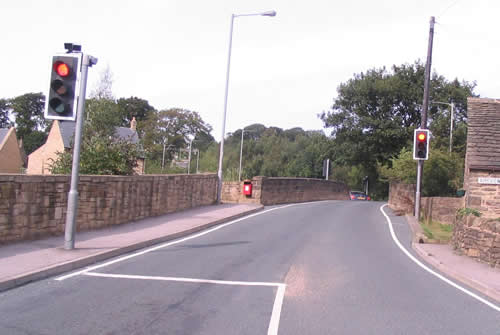
Controller
The apparatus that controls traffic signals.
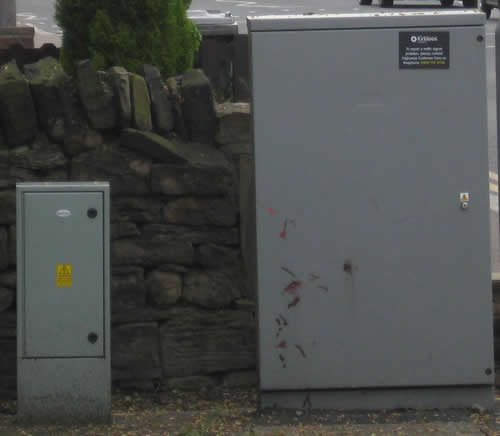
EPROM
Erasable programmable Read Only Memory. The chip that contains all the information required to control the traffic signals at one particular junction. Each EPROM is only applicable to one junction.
Aspect
An optical unit which when illuminated displays a colour and/or symbol i.e. the full green aspect or a red man aspect.
Hood
A device mounted above signal aspects to prevent sunlight reducing the contrast of the aspect. Longer tunnel hoods can also be used to prevent aspects being seen by road users for whom it was not intended, these are often used on signal controlled roundabouts.
Signal Pole
The pole used to mount traffic signal heads on.
Gantry
A large frame used to mount signals over the carriageway.
Mast Arm
A large pole that is cantilevered to allow a signal to be mounted over the carriageway.
Primary Signal
A signal head close to the stop line. It is normally located on the nearside of the carriageway. A duplicate primary signal may also be provided on the offside of the carriageway.

Secondary Signal
A signal head further beyond the stop line which is used to supplement the primary signal.
Green Arrow
An arrow symbol on a green aspect indicating the permitted direction of movement.
This is the same as a standard red/amber/green head but the green aspect is an arrow pointing either to the left, right or ahead. This arrow means that you must turn in that direction only. On older signal installations these arrows may be reinforced with a white arrow on a blue background located next to the green arrow.

Filter Arrow
A green arrow which appears with a full red signal to give right of way to a particular movement. They are often used to allow left turning traffic to start moving before the rest of the traffic.
This arrow is usually fixed to the left hand side of the green aspect on a standard red/amber/green but may sometimes be found underneath the green. It allows left turning traffic to start before ahead/right turning traffic. The filter arrow runs with the red signal and terminates when the main green aspect illuminates.
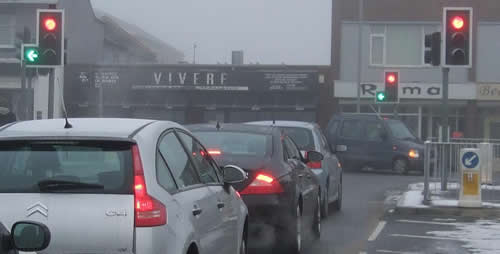
Right Turn Indicative Arrow
A green arrow which appears with a full green and indicates that traffic may proceed in the direction shown. Opposing traffic has been stopped.
This arrow is located either to the right or below the green aspect on a regular red/amber/green head. Unlike a filter arrow, the right turn indicative arrow can only appear when the full green is showing. Whilst all movements are permitted under the full green signal (i.e. right turners can turn in gaps in the opposing traffic) the green arrow suggests that the right turn traffic is protected by a red signal showing to the opposing traffic.
Regulatory Sign
A sign that indicates a traffic regulation for example, no right turn or ahead only.

Wig Wag
A signal consisting of two alternately flashing red lights side by side and a single amber light underneath. They are used where vehicles need to stop but where it is difficult for drivers to forecast when this will occur, for example at a swing/lifting bridge, level crossing or by the exit from an emergency vehicle station. Under no circumstances must a vehicle or pedestrian pass through a wig-wag signal that is in operation due to the danger associated with a quickly approaching train, fire engine or opening bridge.
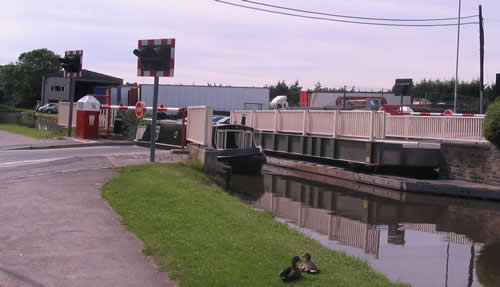
LED
Light Emitting Diode. Increasingly used as the light source for signal heads resulting in brighter, more environmentally friendly (in terms of energy consumption) signal heads.
Solar Cell
A light sensitive device mounted on traffic signals to initiate the dimming of lamps during darkness or foggy weather.
Dimming
The reduction in brightness of signal aspects when light levels fall below a preset threshold. This is to reduce the glare from the lights in hours of darkness/spells of poor weather.
Push Button
A button that is used to register a demand – usually for pedestrians at pedestrian crossings, but a modified version is also used to call a hurry call from within a fire station.
Wait Indicator
The illuminated panel on a push button unit which shows that a demand has been registered.
Audible Signal
A device which produces a bleeping noise to indicate right of way to pedestrians.
Tactile Indicator
A device for indicating pedestrian priority (green man) for visually impaired pedestrians. Usually a rotating cone housed in the bottom of a push button unit.
Tactile Paving
Textured paving used to assist visually impaired pedestrians to identify the location of pedestrian crossing facilities.
Stud
A metallic or thermoplastic marker used to indicate the line of a pedestrian crossing.
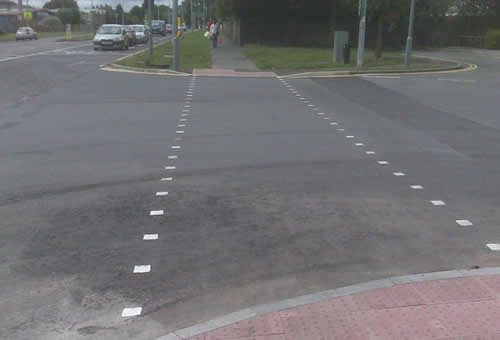
Detector
Equipment that initiates, demands or extends on a particular traffic or pedestrian phase. These can either be loops buried in the carriageway or above ground detectors which are often housed on the top of signal poles.
Detector Loop
One or more turns of wire installed in the road surface which makes up a detector that relies on the electromagnetic changes of a vehicle passing over it.
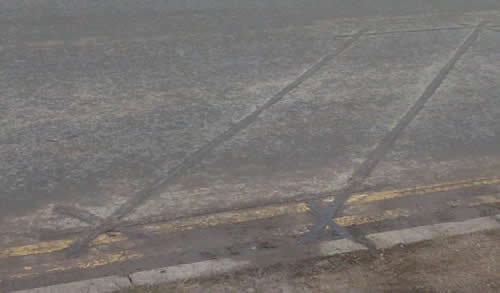
SVD
Selective Vehicle Detector. A detector which responds to certain vehicles, such as buses or emergency vehicles, either by their characteristics or by an electronic tag.
Pole Box
A duct box installed at the base of a signal pole that gives access to the cabling.
Pole Socket
A metal socket which signal poles are bolted into. If the pole is destroyed by an accident then it can easily be unbolted and replaced.
Duct Box
A chamber in the ground which gives access to cable ducts.
Ducting
The system of ducts which carries cables around a junction from the controller to the signal heads and any other associated ducting.
Guard Railing
Railing installed on footways and islands to guide pedestrians towards designated crossing points and prevent them from entering the carriageway.
Variable Message Sign
A sign with a message that can be varied to display certain information at certain times for example at different times of day or under different traffic conditions.
Portable Signal
A traffic signal designed to be moved from place to place – the type generally seen at road works.
Temporary Signals
Traffic signals installed for a limited period of time. They are the same size as permanent signals but may be installed in barrels/containers to allow them to be moved during works.
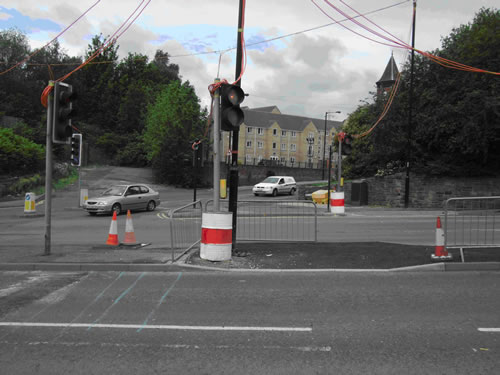
Require Traffic Signal Design Services?
Sanderson Associates have enjoyed over 37 years in business, our Traffic Signal Design Team have extensive experience in assisting our Clients with their Traffic Signal Design requirements for a wide variety of major and minor developments throughout the whole of the UK, Isle of Man and Ireland.
We would be pleased to provide you with our competitive fee proposal for our Traffic Signal Design Services, please call us on 01924 844080 or click here to complete our secure online form.
